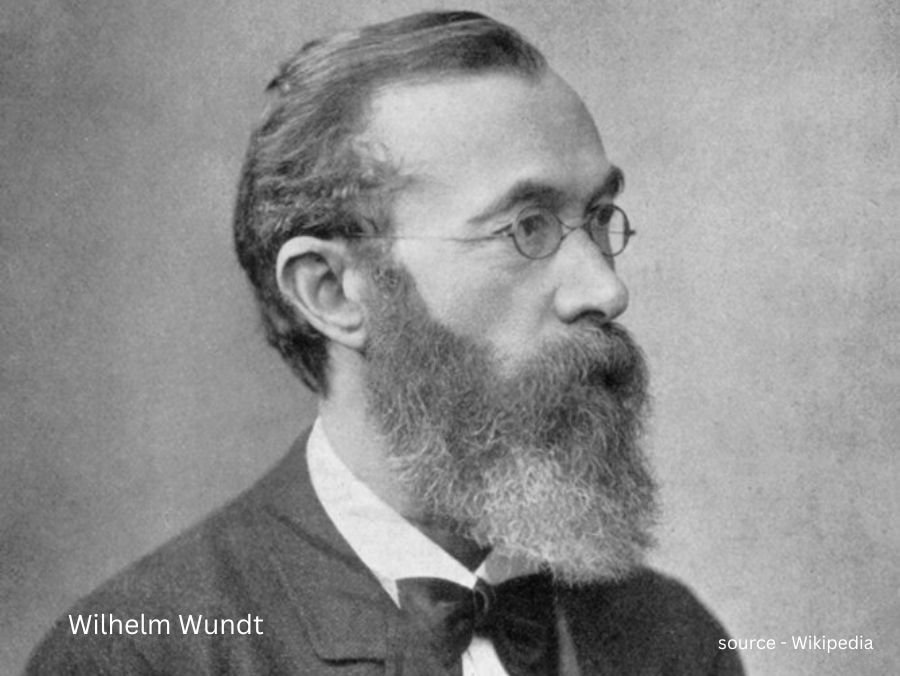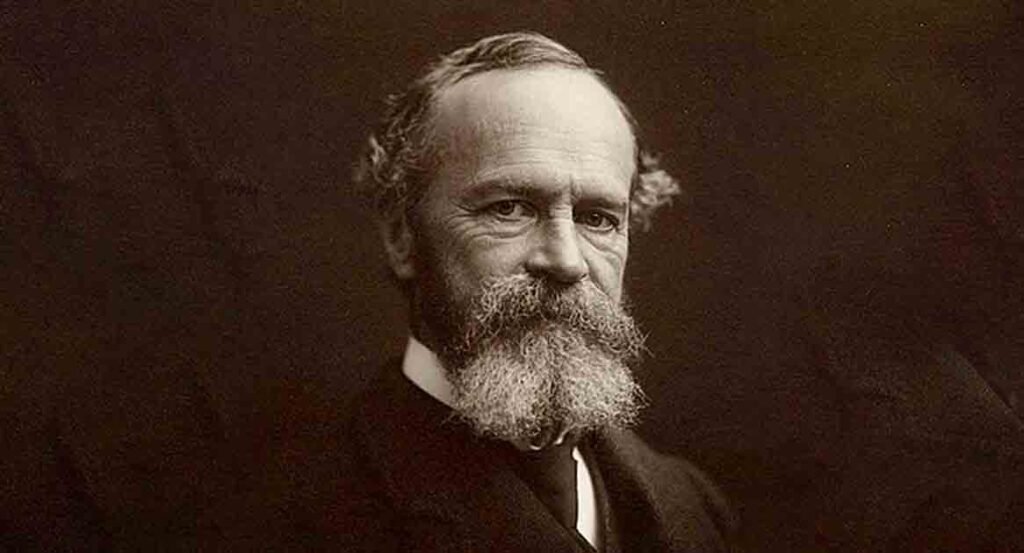“Who looks outside, dreams; who looks inside, awakes.” – Carl Jung
When we think of psychology, we often think of understanding oneself. The study of the mind begins with knowing ourselves. But how do we start understanding the mind? By looking inward and observing the intricate processes within us.
Introspection has thus always held a crucial role in psychology. Today, it involves exploring the depths of our minds, shedding light on the unknown parts of ourselves. Historically, however, introspection was one of the primary methods for making psychology scientific—a fundamental stepping stone in conducting early psychological research. Figures like Wilhelm Wundt and Edward Titchener pioneered introspection as a scientific tool to analyse consciousness.
In practices like self-reflection and mindfulness, it has achieved a newfound appreciation.
What is Introspection?
One of the earliest methods of scientific inquiry, introspection has been understood as a means to study consciousness. American philosopher Stephen C. Pepper stated, “The essential thing in every case of introspection . . . is that some conscious process or part process, some state of consciousness or complex of states of consciousness, is made the object of a ‘conscious psychological apperception.'” Simply put, introspection, according to him, involves actively examining and reflecting on one’s conscious thoughts and feelings, rather than just passively experiencing them. Thus, he identified three elements that form the introspective process:
- Process: This refers to the current mental state or experience an individual is undergoing, capturing the raw data of consciousness, such as thoughts, feelings, or sensory perceptions.
- Apperception: This is the awareness and reflection on the process, allowing individuals to interpret and judge their mental states. It can occur simultaneously with the experience or involve recalling past experiences.
- Description: This involves articulating the insights gained from introspection, providing a verbal representation of the experience, which varies in clarity based on the individual’s ability to express their internal thoughts and feelings.
In the next section, we will learn about famous psychologists and their use of introspection in psychological research.
Pioneers of Introspection
Wilhelm Wundt


Establishing the first scientific laboratory in 1879, Wundt paved the way for psychology to become a scientific discipline. Regarded as the father of psychology, he was interested in experimental approaches to psychology because he believed that this experimental rigour would make psychology scientific. According to Wundt, the subject matter of psychology was consciousness, laying the foundation for introspection. He distinguished between two forms of observation: “self-observation” (Selbstbeobachtung) and “internal perception” (innere Wahrnehmung).
The former he regarded as introspection in its traditional sense, involving an individual contemplating their thoughts, feelings, actions, and experiences. He was critical of this method because of its inherent subjectivity, which he believed led to unreliable reports. He noted that observing our thoughts and feelings could change them, making it hard to obtain a clear, unbiased view.
Since everyone’s experiences are personal and cannot be measured or verified by others, introspection was seen as too unreliable to serve as a solid scientific method. In contrast, “internal perception” (innere Wahrnehmung) was viewed by Wundt as a more scientific and rational method of introspection. He argued that for psychology to be scientific, it was essential to adjust the conditions of internal perception so that they closely resembled those of external perception.
This adjustment was accomplished through psychological experiments designed with this objective in mind, ultimately defining specific structures and guidelines for experimentation. He believed that our thoughts, actions, and feelings needed to be studied in a controlled setting. For example, to study how people feel when they see a bright light, an experiment in a lab is required, during which participants are exposed to a bright light while being asked how they feel and what their thoughts are.
Edward Bradford Titchener:


Titchener established the school of structuralism, which helped psychology move forward and set the stage for others to build on their ideas. Some even call this approach introspective existentialism. He clearly stated that psychology is the study of experience as dependent on the individual experiencing it. This means psychology focuses on understanding experiences through the perspective of the individual.
For example, if two people watch the same movie, their experiences will differ greatly due to their unique perceptions, influenced by their thoughts, feelings, and dispositions. Thus, Titchener believed that to understand psychology, one must comprehend how each person perceives and interprets their experiences. Essentially, psychology isn’t just about external events; it’s also about how those events are processed and understood by the individual experiencing them.
His idea of studying consciousness involved breaking it down into its most basic elements, much like a chemist breaks down a compound into its elements. Titchener sought to deconstruct consciousness into sensations, affections, and images. Like Wundt, he believed that psychology must be scientific and require a standardized scientific methodology; his choice of methodology was systematic introspection.
Titchener termed it systematic introspection to reflect the organized, methodical, and analytical nature of his approach to studying consciousness. This term underscored the structured protocols, trained observers, and focus on the immediate experience that characterized his introspective method.
Systematic introspection can only be carried out scientifically by a trained individual, who must adhere to specific rules. These rules included remaining unbiased or impartial in observation, not allowing attention to wander from the object of observation, ensuring their mind and body were in a fresh state, and, most importantly, maintaining a positive attitude towards the process. A genuine interest in introspection might enhance the accuracy of the insights derived.
Following these introspective rules, Titchener believed a trained observer could fully access the contents of their pure conscious experiences, rather than focusing on the objects or events around them. Like Wundt, Titchener’s introspection was interested only in the immediate contents of the individual’s experiences, not the conclusions they might draw from those contents. This led him to describe what is known as a stimulus error.
He explained that when an observer focuses on the object itself instead of the conscious experience that the object evokes, an error occurs. For example, if a trained observer is asked to describe their experience while looking at a bright red apple and says, “I see an apple,” they are committing a stimulus error by identifying the object rather than describing the immediate sensations they experience. Instead, a trained observer should focus on the colour: “I see a vibrant red,” the shape: “I perceive a round, smooth shape,” the texture: “I feel the coolness of the surface against my hand,” and the taste (if they were to taste it): “I sense a sweet, juicy flavour.”
William James:


One of the most prominent American psychologists, William James defined psychology as “the science of mental life, both of its phenomena and their conditions.” By mental life, he referred to consciousness, while phenomena denoted the objects of conscious experience, and conditions represented how these experiences manifest in the body. Thus, he focused on the physiological effects of psychology.
Unlike Titchener, who emphasized the elemental nature of experiences, James was more interested in the analytical aspect of these experiences. He viewed consciousness as dynamic and ever-flowing, like a meandering stream (which he termed the “stream of consciousness”), and believed it futile to break it down into its components.
Since James considered psychology a natural science, he focused on how human beings continuously adapt to their changing environment. To understand this phenomenon best, his preferred method was introspection, which he viewed as a natural ability everyone possesses, requiring no special training for effective application. This perspective differed from Wundt and Titchener, who emphasized a structured, scientific approach.
James’ concept of the stream of consciousness presented a personal, dynamic, continuous, cognitive, and selective process. He posited that our thoughts are private and constantly evolving, forming a seamless stream of consciousness that engages with the world around us, allowing us to focus on certain aspects while ignoring others. This highlights the complexity of our mental processes and how we relate to reality through our thoughts.
For James, introspection involved simply being aware of thoughts and feelings as they occur in real-time—essentially “catching” moments of consciousness as they pass through the mind. He acknowledged that while introspection has its challenges, it can still be valuable. Despite the difficulties associated with it, James believed introspection could be made more reliable by implementing certain checks, such as comparing different people’s reports of their experiences and looking for patterns or similarities among those reports. By doing this, researchers could verify and validate introspective observations, making them a useful tool for understanding consciousness.
Limitation of Introspection
Introspection, while a valuable method for exploring mental processes, has several limitations that researchers must consider. First, psychologists often place excessive trust in its reliability, which is surprising given the rigorous scientific methods employed in other areas of psychology, such as perception and memory. Introspective reports are inherently subjective, influenced by personal biases and emotional states; for example, anxiety during a presentation can colour one’s introspection, leading to skewed perceptions of their feelings.
Additionally, there is a lack of uniformity in introspective practices, resulting in inconsistency that complicates comparisons across studies. Reports can also be affected by predetermined apperceptive factors, where individuals interpret their experiences through the lens of their past, which further compromises validity. Relying solely on introspection limits the understanding of mental processes, as it may overlook crucial physiological or behavioural indicators, providing an incomplete picture of human behaviour.
To achieve a more comprehensive understanding, introspection should be complemented with other research methods, such as behavioural observations and experimental approaches. Furthermore, introspection should be viewed not only as a method but also as a mental phenomenon requiring further analysis, raising questions about its relationship to other mental processes. In conclusion, while introspection offers valuable insights into personal thoughts and feelings, it is essential to recognize its limitations and employ a variety of methods for a fuller understanding of the mind and behaviour.
In conclusion, while introspection may seem outdated as a method of scientific inquiry in psychology, its relevance endures in contemporary therapeutic practices and self-reflective techniques. Historically criticized for its subjective nature and limitations in empirical research, introspection has nonetheless evolved into a valuable tool for personal exploration and growth.
Today approaches such as mindfulness and various forms of therapy leverage introspective techniques to help individuals gain deeper insights into their thoughts, emotions, and behaviors. These practices highlight the significance of looking within oneself as a means of fostering self-awareness, emotional regulation, and mental well-being. Thus, while introspection may have diminished in academic research, it remains a crucial instrument for individuals seeking to understand themselves better and navigate their mental landscapes effectively.
FAQs
1. What is Introspection?
Introspection involves actively examining and reflecting on one’s conscious thoughts and feelings, rather than just passively experiencing them
2. Who was Wilhelm Wundt?
Establishing the first scientific laboratory in 1879, Wundt paved the way for psychology to become a scientific discipline. Regarded as the father of psychology, he was interested in experimental approaches to psychology because he believed that this experimental rigour would make psychology scientific.
3. Who was EB Titchener?
Titchener established the school of structuralism, which helped psychology move forward and set the stage for others to build on their ideas.
4. Who was William James?
One of the most prominent American psychologists, William James defined psychology as “the science of mental life, both of its phenomena and their conditions.” By mental life, he referred to consciousness, while phenomena denoted the objects of conscious experience, and conditions represented how these experiences manifest in the body. Thus, he focused on the physiological effects of psychology.
5. Limitation of Introspection.
First, people often trust it too much, even though it can be unreliable, especially compared to more scientific methods. Many experts have pointed out that introspection can be influenced by personal biases, which means people’s reports of their thoughts and feelings may not be accurate. There is also a lack of consistency in how introspection is used, leading to confusion in findings.
References +
- Danziger, Kurt. (1980). The history of introspection reconsidered. Journal of the History of the Behavioral Sciences. 16. 241 – 262. 10.1002/1520-6696(198007)16:3<241::AID-JHBS2300160306>3.0.CO;2-O.
- Shusterman, R. (2005). William James, somatic introspection, and care of the self. The Philosophical Forum, 36(4), 383-399. https://doi.org/10.1111/j.1467-9191.2005.00212.x
- Kihlstrom, J. F. (n.d.). Introspection. Consciousness Web. University of California, Berkeley. https://www.ocf.berkeley.edu/~jfkihlstrom/ConsciousnessWeb/Introspection/IntrospectionSupplement.ht m#:~:text=However%2C%20there%20were%20some%20differences,different%20critiques%20of%20int rospection%20emerged.
- Dodge, R. (1912). The Theory and Limitations of Introspection. The American Journal of Psychology, 23(2), 214–229. https://doi.org/10.2307/1412841
- Pepper, S. C. (1918). What is introspection? The American Journal of Psychology, 29(2), 208-213. University of Illinois Press. https://www.jstor.org/stable/1413565
- Singh, A. K. (1991). The comprehensive history of psychology.
- James, W. (1890). Chapter 9. In Principles of psychology







Leave feedback about this